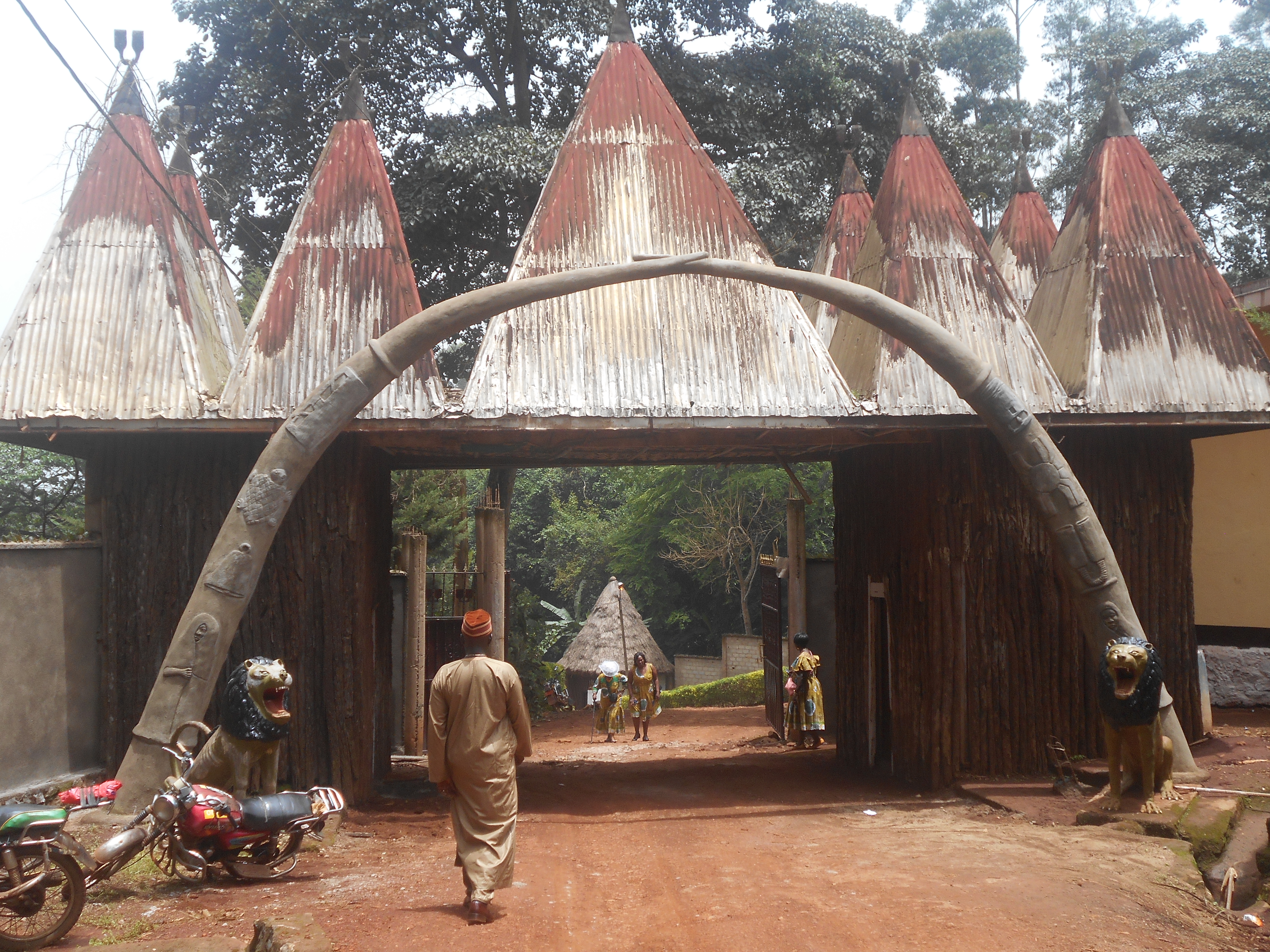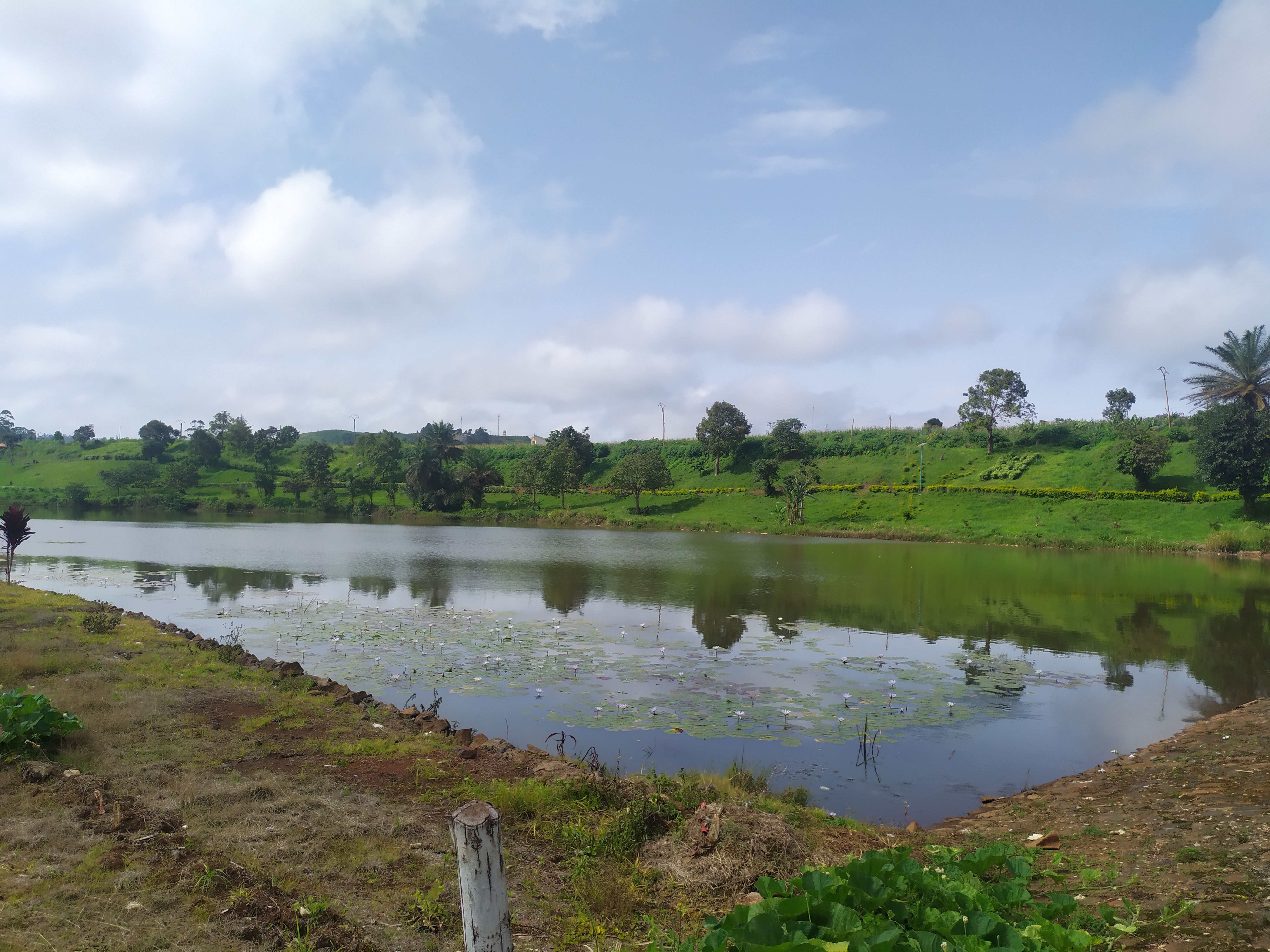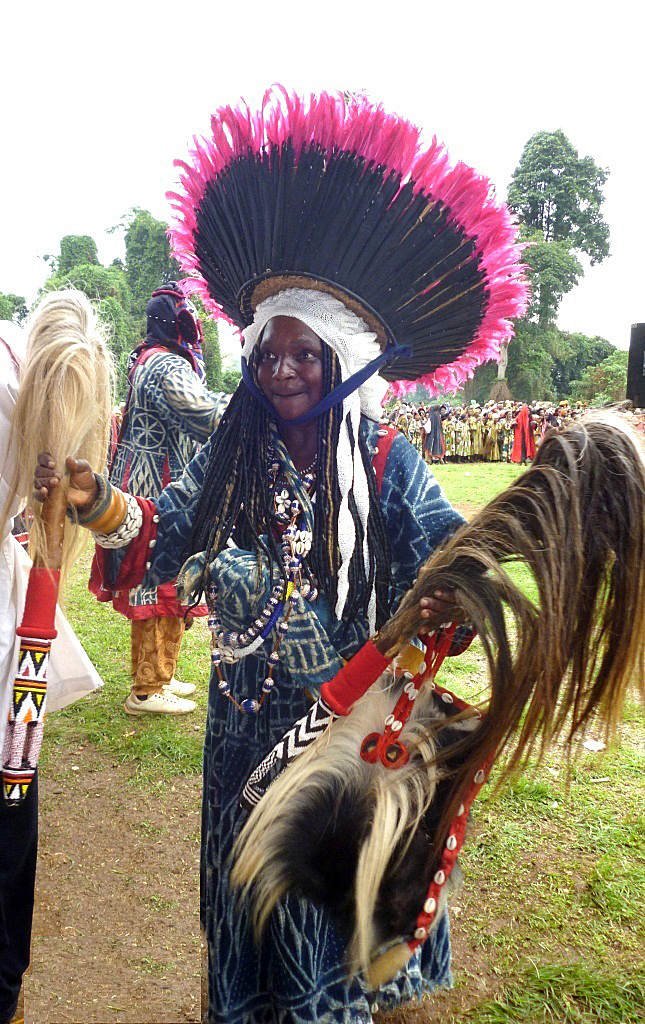|
Bafoussam
Bafoussam is the capital and largest city of the West Region of Cameroon, in the Bamboutos Mountains. It is the 3rd most important (financially) city in Cameroon, after Yaoundé and Douala. The ''communauté urbaine'' (Urban Community) of Bafoussam, is a decentralized territorial collectivity. Originally called Urban Commune of Bafoussam, the communauté urbaine (Urban Community) of Bafoussam, was born after the Presidential Decree N ° 2008/022 of January 17, 2008 and composed of three communes, namely: the Commune of Bafoussam I (Bafoussam proper), the Commune of Bafoussam II (Baleng) and the Commune of Bafoussam III (Bamougoum). The city had an urban population of 347,517 inhabitants (at the 2008 Census). Bafoussam is the West Region centre of trade, and people are farming coffee, Potatoes, maize and beans. The city has also a coffee processing facility and brewery. It is the main city of the Bamiléké people and is home to the Bafoussam chief's palace. Bafoussam is a group ... [...More Info...] [...Related Items...] OR: [Wikipedia] [Google] [Baidu] |
West Region (Cameroon)
The West Region (french: Région de l'Ouest) is 14,000 km2 of territory located in the central-western portion of the Republic of Cameroon. It borders the Northwest Region to the northwest, the Adamawa Region to the northeast, the Centre Region to the southeast, the Littoral Region to the southwest, and the Southwest Region to the west. The West Region is the smallest of Cameroon's ten regions in area, yet it has the highest population density. As home to the enterprising Bamum and Bamileke kingdoms, the West is an economic bright spot and one of Cameroon's more developed regions. This progressive development is tempered by the strong traditional culture that persists among the Bamileke and the province's other major ethnic group, the Bamum (sometimes ''Bamoum'', ''Bamun'', ''Bamoun''). Geography Land The West sits at the geologic crossroads of Cameroon; the soil varies greatly within a relatively small land area. The land along the Noun River and at the Bamendjing ... [...More Info...] [...Related Items...] OR: [Wikipedia] [Google] [Baidu] |
Geremi
Geremi Sorele Njitap Fotso (born 20 December 1978), known simply as Geremi, is a Cameroonian former footballer. He was a versatile player able to play at right back, right midfield or defensive midfielder, known for his power, pace, combative style and free-kick ability. The most successful periods of Geremi's club career came at Real Madrid and Chelsea, winning the UEFA Champions League with the first and domestic honours with the latter. Geremi earned 118 caps for Cameroon from 1996 to 2010, scoring 13 goals. He was a member of their squad for seven Africa Cup of Nations tournaments, winning in 2000 and 2002, as well as the World Cup in 2002 and 2010 and a gold medal at the 2000 Olympics. Club career Early career Geremi was born in Bafoussam, Cameroon. Raised into a footballing family, Geremi was encouraged to remain focused on school by his father, a former player. But as duties for his club and national teams pulled him away from his studies, he eventually decided to pu ... [...More Info...] [...Related Items...] OR: [Wikipedia] [Google] [Baidu] |
Dschang
Dschang is a city located in the West (Ouest) Province of Cameroon, with an estimated population of 87,000 (est) in 2001, growing dramatically from 21,705 recorded in 1981. The 2006 Population is estimated to be 200,000 inhabitants. Dschang is the capital of the division of Ménoua. The Bamiléké are the predominant ethnic tribe. History Colonial era The documented history of Dschang began in 1895, when it was invaded by a German military mission. In 1909, the city replaced Fontem as the capital of a Germany military district. The region where Dschang now exists was then not the place of any major settlement but, instead, was an area that two bordering chiefdoms fought over. The name Dschang translates to "dispute" in the local language. Following Germany's defeat during World War I, Cameroon became both a British and French possession, France declared Dschang to be the capital of West Province, and developed the city's vacation resort in the 1940s. This resort now f ... [...More Info...] [...Related Items...] OR: [Wikipedia] [Google] [Baidu] |
Pierre Webó
Pierre Achille Webó Kouamo (born 20 January 1982), known as Webó, is a Cameroonian football manager and former professional player who played as a striker. He is the assistant manager of Turkish club İstanbul Başakşehir. He spent eight years of his career in La Liga, appearing in a combined 227 matches for Osasuna and Mallorca and scoring 47 goals (in Spain he also represented Leganés). He also competed professionally in Uruguay and Turkey. A Cameroon international in the 2000s, Webó appeared with the country in two World Cups and as many Africa Cup of Nations. Playing career Club Early years Born in Bafoussam, West Region, Webó started his professional career in Uruguay, playing three years with Club Nacional de Football, winning two Primera División titles – although he only was an important first-team member in his third year – and becoming top scorer of the 2002 edition of the South American Cup. He moved to Europe in January 2003, signing with secon ... [...More Info...] [...Related Items...] OR: [Wikipedia] [Google] [Baidu] |
Bamougoum
The Bamileke are a Central African people who inhabit the Western High Plateau of Cameroon. Languages The Bamileke languages belong to the Grassfields branch of the Niger-Congo language family, which is sometimes labeled as a " Bantuoid language," rather than a Bantu language.Derek Nurse & Gérard Philippson, 2003, ''The Bantu Languages,'' p 227 History The Bamileke are said to have entered their current location from the Mbam region further north, They originally referred to themselves as ''Baliku''. ''Bamileke'' is thought to be a colonial corruption of their original names. They were later joined by the Tikar, Bali, Bamum and Bafia peoples, who migrated into their current region of Cameroon. This accounts for the use of the title ''Fon'' by all five of the ethnic groups. Like a king, the ''Fon'' is head of all authorities, from territory to civil and military, within a given kingdom. In the 17th century, the Bamileke migrated further south and west under the pressur ... [...More Info...] [...Related Items...] OR: [Wikipedia] [Google] [Baidu] |
Bamileke People
The Bamileke are a Central African people who inhabit the Western High Plateau of Cameroon. Languages The Bamileke languages belong to the Grassfields branch of the Niger-Congo language family, which is sometimes labeled as a " Bantuoid language," rather than a Bantu language.Derek Nurse & Gérard Philippson, 2003, ''The Bantu Languages,'' p 227 History The Bamileke are said to have entered their current location from the Mbam region further north, They originally referred to themselves as ''Baliku''. ''Bamileke'' is thought to be a colonial corruption of their original names. They were later joined by the Tikar, Bali, Bamum and Bafia peoples, who migrated into their current region of Cameroon. This accounts for the use of the title ''Fon'' by all five of the ethnic groups. Like a king, the ''Fon'' is head of all authorities, from territory to civil and military, within a given kingdom. In the 17th century, the Bamileke migrated further south and west under the pressure of ... [...More Info...] [...Related Items...] OR: [Wikipedia] [Google] [Baidu] |
Guy Kouemou
Guy Kouemou (born 15 January 1970 in Bafoussam, Cameroon) is a German Aerospace -Engineer and Inventor, with a Camerounian origin. Biography Childhood, education and beginnings Date of birth January 15, 1970 in Bafoussam Cameroon (father profession: professor, Bamileke king representative, mother profession: teacher) Dr.-Ing. Guy Leonard Kouemou is an engineer and inventor in the aerospace and medical technology sectors. He is a German citizen (Afro-German), of Cameroonian origin. He comes from the Bamileke royal house and is the king's representative of the Bangwa and great-grandson of King NoNo Tchoutouo who has a special friendship with Kaiser Wilhelm in the years 1884 to 1918, where Cameroon was a German colony. After initial difficulties, the Bangwa peoples were especially friends with the colonial powers from Berlin, and later with them. Bangwa has been known in Germany since 1884, especially for its works of art. Several of these Bangwa art objects can be found i ... [...More Info...] [...Related Items...] OR: [Wikipedia] [Google] [Baidu] |
Bamiléké
The Bamileke are a Central African people who inhabit the Western High Plateau of Cameroon. Languages The Bamileke languages belong to the Grassfields branch of the Niger-Congo language family, which is sometimes labeled as a " Bantuoid language," rather than a Bantu language.Derek Nurse & Gérard Philippson, 2003, ''The Bantu Languages,'' p 227 History The Bamileke are said to have entered their current location from the Mbam region further north, They originally referred to themselves as ''Baliku''. ''Bamileke'' is thought to be a colonial corruption of their original names. They were later joined by the Tikar, Bali, Bamum and Bafia peoples, who migrated into their current region of Cameroon. This accounts for the use of the title ''Fon'' by all five of the ethnic groups. Like a king, the ''Fon'' is head of all authorities, from territory to civil and military, within a given kingdom. In the 17th century, the Bamileke migrated further south and west under the pressur ... [...More Info...] [...Related Items...] OR: [Wikipedia] [Google] [Baidu] |
Baleng
The Bamileke are a Central African people who inhabit the Western High Plateau of Cameroon. Languages The Bamileke languages belong to the Grassfields branch of the Niger-Congo language family, which is sometimes labeled as a " Bantuoid language," rather than a Bantu language.Derek Nurse & Gérard Philippson, 2003, ''The Bantu Languages,'' p 227 History The Bamileke are said to have entered their current location from the Mbam region further north, They originally referred to themselves as ''Baliku''. ''Bamileke'' is thought to be a colonial corruption of their original names. They were later joined by the Tikar, Bali, Bamum and Bafia peoples, who migrated into their current region of Cameroon. This accounts for the use of the title ''Fon'' by all five of the ethnic groups. Like a king, the ''Fon'' is head of all authorities, from territory to civil and military, within a given kingdom. In the 17th century, the Bamileke migrated further south and west under the pressur ... [...More Info...] [...Related Items...] OR: [Wikipedia] [Google] [Baidu] |
Regions Of Cameroon
The Republic of Cameroon is divided into ten regions. In 2008, the President of the Republic of Cameroon, President Paul Biya signed decrees abolishing "provinces" and replacing them with "regions". Hence, all of the country's ten provinces are now known as regions. Most of these provinces were designated in the 1960s alongside Centre-South Province (split into Centre and South in 1983). At the same time, Adamawa and Far North Provinces were split from North Province. See summary of administrative history in Zeitlyn 2018. See also * List of regions of Cameroon by Human Development Index * ISO 3166-2:CM * Communes of Cameroon * Departments of Cameroon * Subdivisions of Cameroon The constitution divides Cameroon into 10 semi-autonomous regions, each under the administration of an elected Regional Council. A presidential decree of 12 November 2008 officially instigated the change from provinces to regions. Each region is ... * List of municipalities of Cameroon Ref ... [...More Info...] [...Related Items...] OR: [Wikipedia] [Google] [Baidu] |
Foumban
Foumban or Fumban is a city in Cameroon, lying north east of Bafoussam. It has a population of 83,522 (at the 2005 Census). It is a major town for the Bamoun people and is home to a museum of traditional arts and culture. Foumban is known for its political significance in the formation of Cameroon's history and its cultural, tourism and economic potential. There is also a market and a craft centre, while Foumban Royal Palace contains a museum with information on Ibrahim Njoya who invented a new religion, Bamum script, and the artificial language Shümom. History Foumban is the headquarters of the Noun Division of the Western province. It was the seat of the Bamoun Dynasty. The Bamoun Dynasty was founded in the 1394 by Mfon Nshare Yen. Mfon Nshare became the first Mfon (what is today called Sultan) and was the founding father of Foumban, which became the capital city of the Bamoun Dynasty. This was as a result of the many wars against neighboring kingdoms between 1394 ... [...More Info...] [...Related Items...] OR: [Wikipedia] [Google] [Baidu] |








